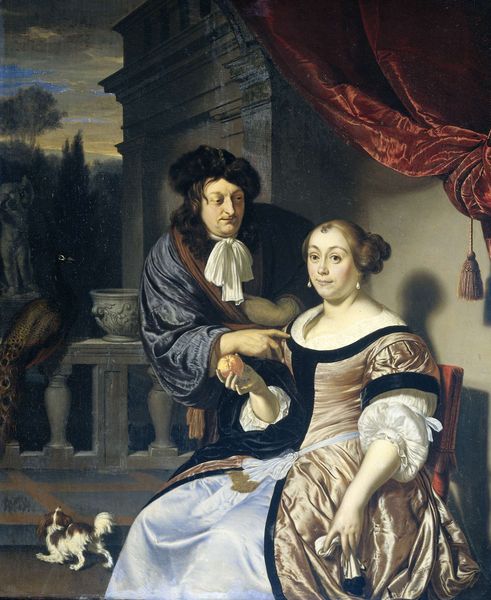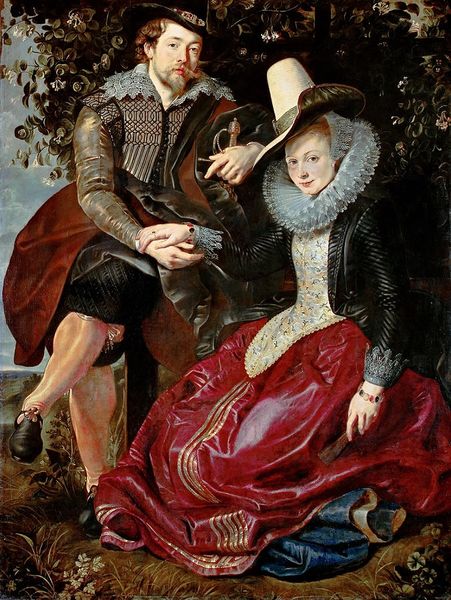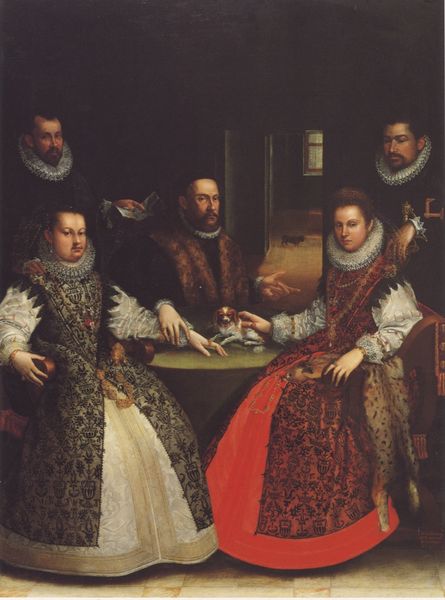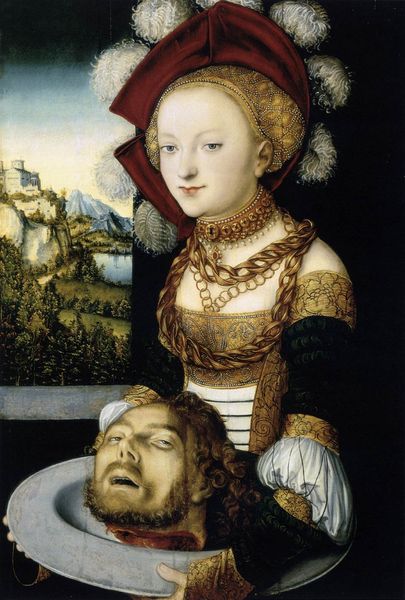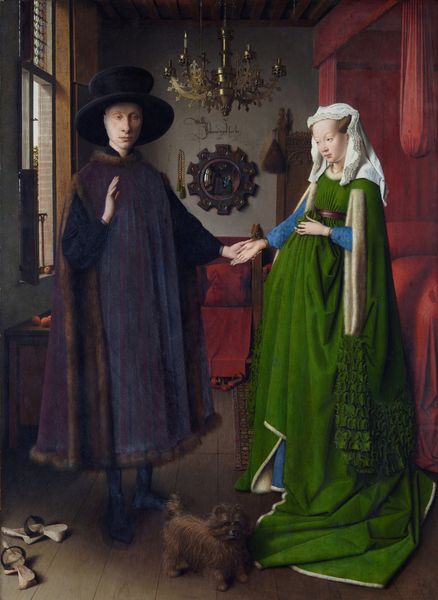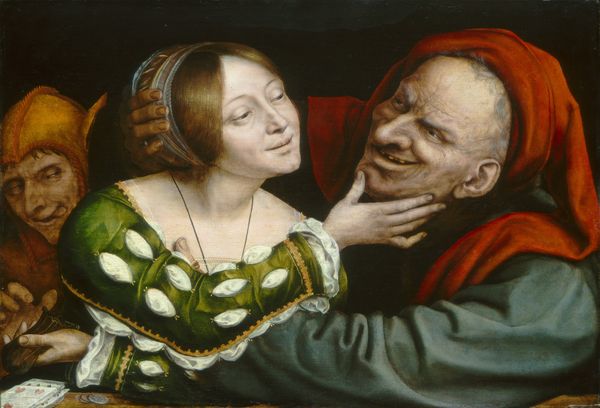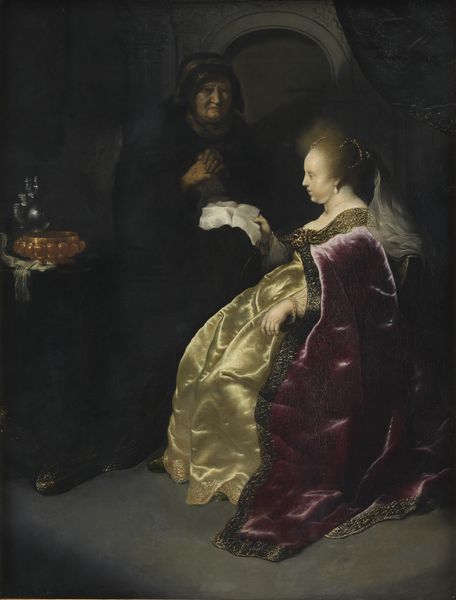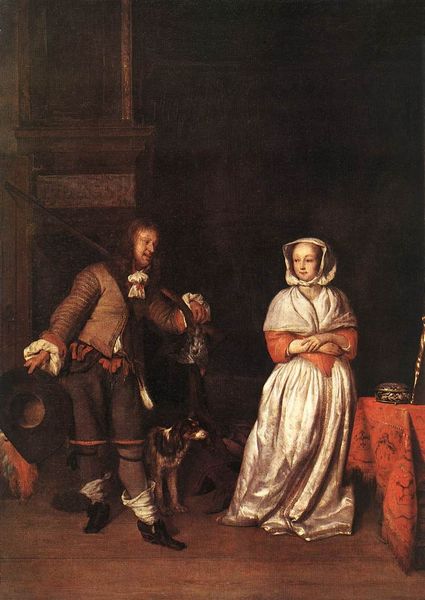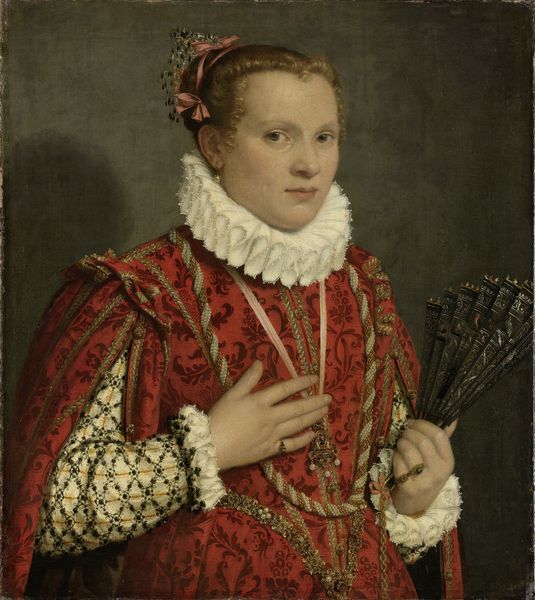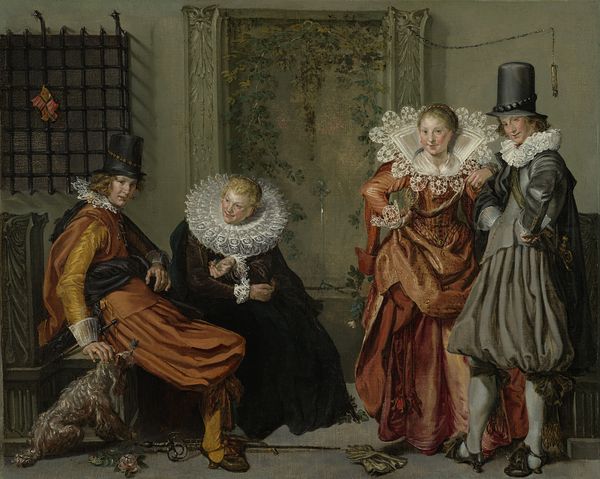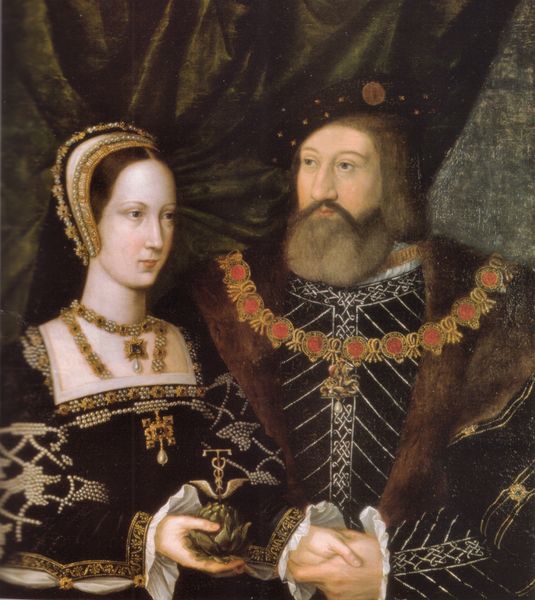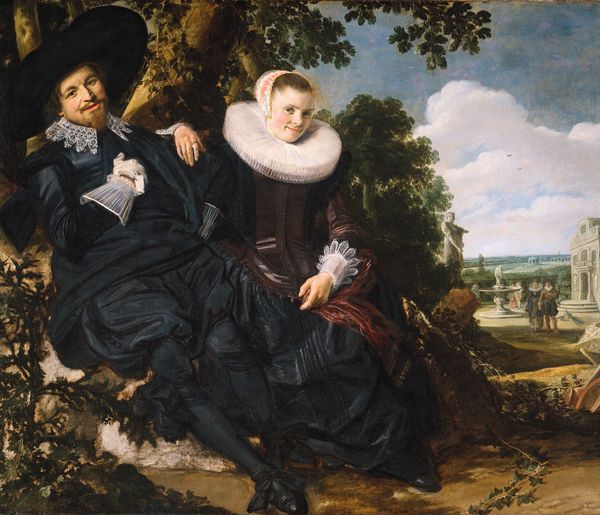
painting, oil-paint
#
portrait
#
painting
#
oil-paint
#
mannerism
#
group-portraits
#
genre-painting
Dimensions: height 76 cm, width 63 cm, depth 3.5 cm
Copyright: Rijks Museum: Open Domain
Curator: This striking image, created by Pieter (I) Pietersz around 1560-1570, is titled "Man and Woman at a Spinning Wheel." The piece is an oil painting depicting a couple, presumably during their daily lives. Editor: My first impression is of contained energy. They’re formally posed, but something in the woman's gaze and the man's subtle turn suggests tension just below the surface. It feels less like a simple portrait and more like a snapshot into a complicated relationship dynamic. Curator: That's interesting. Genre painting during this period was indeed about capturing glimpses of daily life, but often idealized to project moral or social messages. Pietersz, working within the Mannerist style, infuses this ordinary scene with an unsettling formality. The composition certainly speaks volumes; he is gazing directly into the distance and seems a bit disconnected. What narrative can be deciphered if the gender roles were shifted? Editor: The spinning wheel immediately strikes me. It positions the woman in a space of domestic labor, yes, but consider what it might symbolize more broadly. Spinning creates thread, which then weaves into fabric. Could she be metaphorically weaving the fabric of their lives? What if this is less about celebrating domestic virtue and more about highlighting the labor, both visible and invisible, that women performed within these patriarchal structures? We also have to remember that we cannot escape class and power relationships, given this period in history. Curator: I agree, absolutely. The very inclusion of genre painting as a subject worth portraying signaled shifting social values, even challenges to aristocratic norms, despite the artist very likely needing the aristocrats for economic support and social status. In the 16th century, in places like the Netherlands in particular, we see new merchant classes demanding recognition. It's all fascinating if you consider how artists themselves navigated these waters, creating imagery for both traditional patrons and this emerging bourgeoisie. Editor: Exactly! It’s through works like this that we can access a deeper understanding of the evolving power dynamics in that period. Their stiff, slightly uncomfortable posture further suggests this dance of control, maybe even the precarity of these new social arrangements. Curator: So, while on first glance one could classify the artwork simply as genre or even portraiture, your perspective really opens this up as a lens through which we can understand the nuances of social, gendered, and economic experiences of the time. Thank you for highlighting this crucial perspective! Editor: Thank you. It is often the quiet moments in art, like this, that tell the loudest stories of resistance and transformation.
Comments
rijksmuseum about 2 years ago
⋮
Despite their individualized features, it is uncertain whether the depiction of this elegantly dressed couple was intended as a portrait. The scene nevertheless carries a clear message. The man holding a tankard is seducing the young woman, who stares directly at us. She must choose between the spinning wheel and the tankard, between virtue and vice.
Join the conversation
Join millions of artists and users on Artera today and experience the ultimate creative platform.
